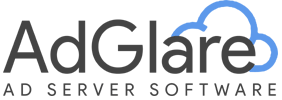AdGlare uses industry terms as much as possible. In case you're unfamiliar with certain terms, here's an overview of the basics.
| Term | Explanation |
|---|
| 3P Cookie | Shorthand for "Third-Party cookie". 3P cookies are created by domains other than the domain visible in the browser bar. |
| 3PAS | Shorthand for "Third-Party Ad Server". Examples are Google Ad Manager, Sizmek, Appnexus and AdGlare. |
| Ad Request | The request to fill an ad slot once a page loads. Each time the ad tag is executed, an ad request is counted. That doesn't necessarily mean that an ad is served: think about targeting, capping and pacing. Ad requests are counted whether an ad is shown or not. |
| Ad Tag | An HTML tag or JavaScript code that is placed on a web page where the ad has to be displayed. The tag makes an ad request to AdGlare's engines, asking to return an ad. In AdGlare, ad tags are generated at zone level. |
| Asynchronous Code | Code that doesn't delay the execution of other tasks in the browser. Async tags are loaded in parallel with other requests. It became a default since Chrome started to block synchronous requests on mobile phones. |
| Booked Quantity | The number of impressions or clicks as negotiated in the deal with the advertiser. The campaign will be automatically stop being served when this amount has been reached. |
| Campaign | Holds a set of one or more creatives. It allows you to set targeting rules, control delivery and assign the set of creatives to one or more zones. |
| Click Macro | A piece of code that allows you to track clicks on third-party creatives. AdGlare doesn't need click macros, since clicks on third-party creatives will be detected automatically. |
| Creative | The actual ad. It can be a JPG/PNG/GIF banner, a third-party tag, an MP4 video, a ZIP file containing the assets, etc. Creatives are added to a campaign, which is then assigned to a zone for delivery. |
| Dayparting | A targeting technique, allowing you to run campaigns only during specific times or days of the week. |
| Delivery Speed | The speed at which a campaign is served. By default, campaigns are served as fast as possible. If you set an end date, you can spread the impressions over time by adjusting the delivery speed. |
| Fill Rate | The fill rate is simply the number of ad requests answered divided by the number of ad requests sent, expressed as a percentage. To achieve a 100% fill rate, a zone should always have an untargeted campaign to serve in the lowest tier. |
| Flight Dates | The date range for a campaign to be served. Based on a start and end date. |
| Frequency Capping | Limits how often an ad is served to the same user in a specific period of time. For example, a limit of 3 times per day. Reduces banner blindness. |
| Frontloaded | A delivery speed setting. To minimize the chance of under-delivery, frontloading will serve more impressions during the start of the campaign. The ad-serving rate gradually decreases as the end date approaches. |
| Impression | An impression is counted each time a creative <i>starts</i> to load on the user's device. Note that it doesn't reflect the number of fully-loaded creatives, nor does it say anything about the ad's viewability. |
| Lazy Loading | A technique to delay ad loading until the zone appears in the device's viewport. This increases the chance that the ad will be visible and inherently improves CTR. It also improves page load times. |
| Native Ad | A type of ad that matches the visual design of the web page. Native ads behave like natural content on the publisher's page and therefore tend to have higher CTRs. |
| Quality Assurance | Also called QA. Publishers usually evaluate if a creative meets their quality standards. For example, you don't want creatives to load 86 MB of data, fry the CPU or redirect to a new page without user interaction. |
| Screenshots | Publishers commonly send a screenshot back to the advertiser, showing that the ad is correctly displayed on the web page as negotiated. AdGlare automates this process by taking these screenshots for you. |
| Unfilled Impression | An ad request that didn't return an ad, because none were eligible to serve. The zone will remain blank, which is a missed opportunity. You can avoid this by assigning untargeted campaigns in the lowest tier to each zone. |
| Viewability | The percentage of impressions that were seen by users. As per IAB standards, AdGlare considers an impression viewable when the ad is displayed for at least 1 second with >50% of the ad's pixels on the screen. When an ad is loaded at the bottom of the page, viewability is usually low as not all users scroll down. |
| Zone | A unique location on a page where an ad is served. The engines will return an ad based on the campaigns assigned to the zone. |
If the term you're looking for is not on the list, please contact your AdGlare account manager.
We'll be happy to add it for you sentiment_satisfied_alt

